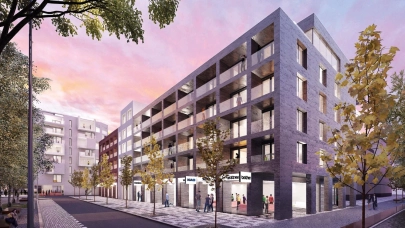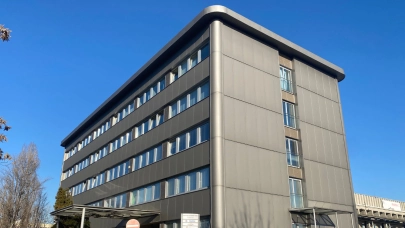
Occupiers are increasingly forced to adjust to rapidly changing demands from employees. They also have to manage rising costs and meet environmental demands. Property Forum asked James Bartolo, Partner, Head of Multi-Market Tenant Representation EMEA at Knight Frank about the incentives for office workers and the ways companies coop with these tasks.
Is the march of work from home (WFH) over?
It has changed the way how the occupiers have to use their offices. People got used to working in a very different way because of the pandemic. Flexible work rules now and hybrid work is here and is to stay even if certain companies do not like it.
What is the proportion of WFH and onsite work at the moment?
It changes from country to country, culture to culture. In Asia, it is very close to the pre-pandemic level so mostly only one day per week is allowed for the WFH. In Europe, most countries prefer to give 2-3 days for WFH and that is becoming a normal way. Some companies are pushing it harder saying that they want mandated presence in the office. Horatiu Florescu, Chairman & CEO of Knight Frank CSEE added: "I’d say, in Budapest, most of the companies provide a home office 2 or 3 days/week. That could mean 40% of your office space could be used up differently and we can provide workspace solution services, investigating what actual space is needed and how the current office could be re-organized."

James Bartolo
Head of Multi-Market Tenant Representation EMEA
Knight Frank
What about incentives for employees? What makes them return to the office?
In the first post-pandemic period many companies started to give free drinks on Friday or breakfast on Monday. Now that is not enough. Employees seek benefits from coming to the office. Can it offer child care? Does it have workout facilities? Does it have a very good and charming place to eat? Creating glass boxes will not do anymore. Horatiu Florescu also emphasized that employees also need to understand the value of collaboration with each other. Having Teams calls will not make you learn tips and tricks from your more senior peers, nor will it replace that one-on-one valuable social time. Still, the office space organizations offer needs to make the trip worth it, the time spent in traffic by employees.
What is the proportion of collaborative and non-collaborative space in this post-pandemic era? Is the kitchen the star?
In the first months after the pandemic people demanded an almost desk-free environment and voted for much more collaborative space. Later what they worked out was that employees did not have a place to sit down. A lot of companies went too far in making collaborative space dominant. Now it has changed and is more balanced. They have „me space” and „we space”. There are spaces where people can make casual meetings and certainly, there are private phone boots as well. Apart from larger meeting rooms, there are rooms for 2-3 people with casual furniture.
The kitchen is an important part of the whole office interior and has become a space for casual meetings. Eating at your desk is no longer fancy if you have a good kitchen with your colleagues where you can discuss topics other than work. I have to say that there are bad examples as well. We can find offices where thousands of Euros were spent but we can not see any kind of positive change to meet new demand.
How landlords are pushing tenants to have a lower footprint?
There were big statements made by companies to reduce their footprint by 25%, and some of the large banks promised to have an even bigger reduction. The idea is that you come to the office and see fewer desks and more collaborative space. Because the hybrid model companies need less space, that is certainly the case with the software development companies and some other sectors as well. But surely that is not enough and tenants have to care for their use of the office facilities and try to find a building which provides eco-friendly solutions. Sometimes tenants are downgrading office buildings because they are unable to get proper technical data on their use from their landlord. To show a BREEAM or LEED certificate is not enough and tenants will demand much deeper information to comply with their own ESG goals.
Companies face not only pressure from employees but much higher costs of occupancy. In Budapest, some buildings charge for service the same as for the rent. That is a big headache for occupiers.
It is for sure. But let me remind you that real estate has always been a big cost, though it normally takes only 7-10 % of the overall budget. What has happened is that companies have this drive towards better space. In the past they could accept to be in a B or C-category building now they have the energy or environmental targets and they are willing to spend more to move to a higher grade real estate. They get a better quality office because of the energy efficiency of the building, and because of the attractiveness and ability of the building to retain talents. Owners are pushed to spend substantial money to meet new environmental demands otherwise they will risk losing tenants. Second and third generations of buildings are under big pressure to comply with these changes.
Some parts of the lease contracts have also changed. For instance here in Budapest, some tenants could manage to get a 3-4 years contract instead of 5. Is this a sign of a new era?
I think we have touched on the capex problem. A lot of tenants do not want to spend on it. To balance out this capex owners/landlords need to have leases for 7 years and that is the minimum. But tenant flexibility is paramount. Nine years ago in London, most leases were for 20 years whereas now they are for 10 with a break of 5. In Europe, we see mostly a 5+5 years model, in some of the French-speaking countries you can find 3+6 years.
Incentives depend on the size and nature of the company. Having a huge space in a building will allow you to get more incentives from the landlord. Companies may also grow or shorten over this long period so they are bound to adjust their office needs. Mergers and acquisitions may also have an impact on this. But do not forget that if you are a tenant and want a break you have to spend on that as well, so nothing comes for free, there will always be a „penalty”. However, I think both the landlord and tenants are interested in having their engagement prolonged. That should be a win-win situation.



